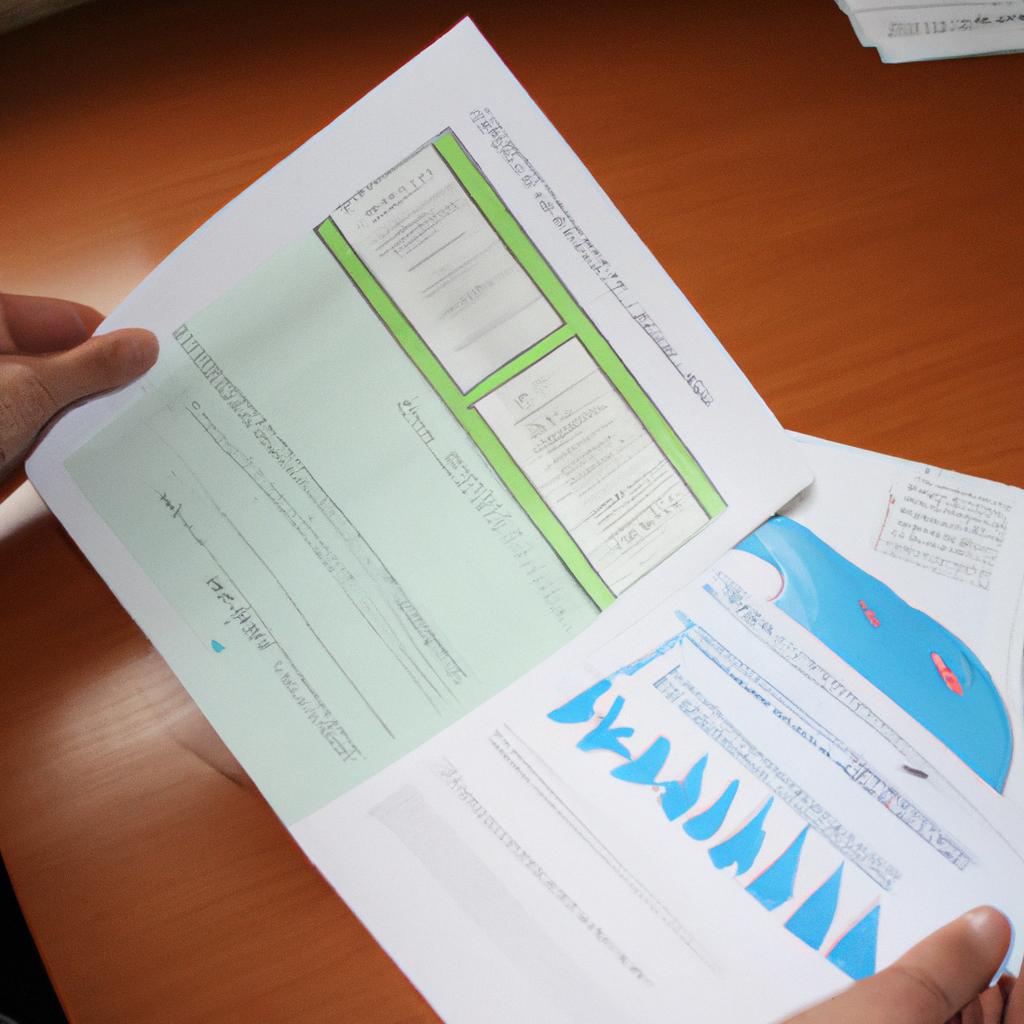Working capital management is a crucial aspect of financial decision-making for businesses operating in various industries. In the realm of the music industry, specifically within the tango genre, managing working capital can present unique challenges and opportunities. This article explores the concept of working capital in relation to tango instruments and delves into the world of tango financing.
To illustrate the significance of working capital in this context, let us consider a hypothetical case study involving a tango instrument manufacturer. Imagine a company that specializes in crafting high-quality bandoneons, an essential instrument in tango music. Despite having a strong market demand for their products, this manufacturer often struggles with maintaining sufficient cash flow to support its operations effectively. The production process involves acquiring raw materials and components, as well as covering labor costs until sales are made. Consequently, managing working capital becomes paramount to ensure uninterrupted production cycles and meet customer demands promptly.
In light of these considerations, this article aims to explore how companies involved in the manufacturing or distribution of tango instruments can optimize their working capital through effective financing strategies. By analyzing different funding options such as trade credit, factoring arrangements, and inventory management techniques, it seeks to provide insights on enhancing liquidity while balancing profitability in the niche domain of tango instrument business .
Furthermore, this article will discuss the importance of maintaining a healthy cash conversion cycle (CCC) in the tango instrument industry. The CCC measures the time it takes for a company to convert its investments in inventory and other resources into cash flows from sales. By reducing the time it takes to sell finished products and collect payments, companies can improve their working capital position and overall financial health.
Additionally, this article will explore the potential benefits of establishing strong relationships with suppliers and customers in the tango instrument industry. Negotiating favorable payment terms with suppliers, such as extended credit periods or discounts for early payment, can help manage cash outflows effectively. Similarly, offering incentives for prompt payments from customers can help accelerate cash inflows and improve working capital management.
Moreover, this article will touch upon the role of technology in streamlining working capital processes within the tango instrument industry. Implementing efficient inventory management systems, automated billing and collection procedures, and real-time financial reporting tools can enhance control over working capital components and provide valuable insights for decision-making.
In conclusion, managing working capital is essential for businesses operating in the tango instrument industry to maintain liquidity, meet customer demands promptly, and ensure smooth operations. By employing effective financing strategies, optimizing inventory management techniques, nurturing supplier and customer relationships, and leveraging technology solutions, companies can achieve a balanced approach to working capital management that supports long-term success in this unique sector of the music industry.
Understanding Working Capital
Working capital is a crucial aspect of financial management that determines the short-term liquidity and operational efficiency of an organization. It represents the funds available to cover day-to-day expenses, manage inventory levels, and meet short-term obligations. To illustrate its significance, let us consider the case of Company X, a small manufacturing firm specializing in luxury watches.
Case Study:
Company X has experienced steady growth in sales over the past year due to increasing demand for their products. However, they have encountered challenges in managing their working capital effectively. Despite generating substantial revenue, the company often faces cash flow shortages and struggles to pay suppliers on time. As a result, they find it difficult to maintain optimal inventory levels and fulfill customer orders promptly. This scenario highlights the importance of understanding and efficiently managing working capital to ensure smooth business operations.
Importance of Working Capital Management:
To better comprehend the role of working capital, consider these key points:
- Cash Flow Stability: Adequate working capital ensures sufficient cash reserves are available to cover daily operating expenses such as wages, utilities, and raw material purchases.
- Inventory Optimization: Proper management allows companies to strike a balance between maintaining adequate stock levels without tying up excessive funds unnecessarily.
- Supplier Relationships: Timely payment to suppliers not only strengthens relationships but also enables negotiation power for favorable terms and discounts.
- Meeting Customer Demands: With optimized working capital, businesses can respond swiftly to customer needs by fulfilling orders promptly or investing in new product development.
Table:
The table below demonstrates how effective working capital management impacts various aspects of business operations:
| Aspect | Poor Working Capital Management | Efficient Working Capital Management |
|---|---|---|
| Liquidity | Low cash reserves | Sufficient cash availability |
| Inventory Levels | Overstocked or understocked | Optimal stock levels maintained |
| Supplier Relations | Late payments | Timely payments |
| Customer Satisfaction | Delays in order fulfillment | Prompt and reliable service |
By considering the case study of Company X and understanding the importance of efficient working capital management, we can recognize its impact on overall business performance. In the subsequent section, we will delve deeper into why effectively managing working capital is vital for organizations seeking sustainable growth and success.
The Importance of Working Capital Management
Transitioning from the previous section, where we gained an understanding of working capital and its significance, let us now explore how it is applied specifically within the context of Tango financing. To illustrate this concept further, consider a hypothetical scenario involving a small tango instrument manufacturing company called Melodia Instruments.
Melodia Instruments relies on efficient management of their working capital to sustain day-to-day operations and support growth opportunities. By effectively managing their working capital, they can ensure that they have enough funds to cover operational expenses while also meeting short-term financial obligations.
When analyzing the working capital needs of Melodia Instruments, several key factors come into play:
-
Accounts Receivable Management: Efficiently managing customer payments becomes crucial for maintaining adequate cash flow. Delayed or unpaid invoices can strain liquidity and hinder business operations. Implementing strategies such as offering incentives for early payment or conducting credit checks on customers can help minimize risks associated with accounts receivable.
-
Inventory Control: Controlling inventory levels is essential to prevent excess stock accumulation or shortages. Maintaining optimal inventory levels ensures timely production and delivery of tango instruments without tying up excessive capital in unsold products. Adopting just-in-time inventory practices and utilizing advanced forecasting techniques contribute to effective inventory control.
-
Supplier Relationships: Nurturing strong relationships with suppliers plays a vital role in optimizing working capital management. Negotiating favorable payment terms and discounts allows Melodia Instruments to stretch out their payables while conserving cash flow. Collaborating closely with suppliers fosters trust and enables access to competitive pricing, ultimately benefiting the company’s overall financial health.
-
Cash Flow Projection: Regularly monitoring cash inflows and outflows through accurate cash flow projection facilitates proactive decision-making regarding working capital requirements. This helps anticipate potential funding gaps ahead of time, enabling Melodia Instruments to take appropriate measures like securing additional financing or adjusting expenditure patterns accordingly.
In summary, working capital management in Tango financing is crucial for the smooth operation and growth of companies like Melodia Instruments. By effectively managing accounts receivable, inventory levels, supplier relationships, and cash flow projections, they can ensure a healthy financial position and seize opportunities for expansion.
Transitioning into the subsequent section about “Factors Affecting Working Capital,” we will now explore various external and internal determinants that influence the dynamics of working capital management within organizations.
Factors Affecting Working Capital
Having discussed the importance of working capital management, we now turn our attention to understanding how various factors can affect working capital. To better comprehend this concept, consider the case of a hypothetical company, Tango Instrument, which manufactures and sells musical instruments.
Working Capital Factors:
-
Seasonal Demand:
Tango Instrument experiences fluctuations in demand throughout the year, with peak sales occurring during holiday seasons and music festivals. During these periods, the company requires higher levels of working capital to meet increased production needs and maintain adequate inventory levels. Conversely, during slower months, excess inventory may tie up valuable resources that could have been utilized elsewhere. -
Supplier Relationships:
The strength and reliability of supplier relationships play a crucial role in managing working capital effectively. By negotiating favorable payment terms or securing discounts for early payment, Tango Instrument can improve its cash flow position and reduce the need for excessive working capital. On the other hand, any disruptions in supplier deliveries or changes in pricing agreements might lead to liquidity issues and strain on working capital. -
Customer Credit Policies:
Tango Instrument offers credit facilities to customers based on their creditworthiness and past payment history. While providing such flexibility can attract more buyers and drive sales growth, it also exposes the company to potential delays in receiving payments. Striking a balance between offering credit terms that entice customers while ensuring timely collections is vital for maintaining optimal levels of working capital. -
Operational Efficiency:
Efficiency within Tango Instrument’s operations directly impacts its working capital requirements. Streamlining manufacturing processes, reducing wastage, minimizing lead times between order placement and delivery, and implementing effective inventory management techniques are all essential measures towards maximizing efficiency and optimizing available funds.
Table: Factors Affecting Working Capital
| Factor | Impact on Working Capital |
|---|---|
| Seasonal Demand | Higher requirement |
| Supplier Relationships | Cash flow improvement |
| Customer Credit Policies | Payment delays |
| Operational Efficiency | Optimal utilization |
The factors discussed above highlight the intricate relationship between working capital and various operational aspects within Tango Instrument. By understanding these dynamics, companies like Tango Instrument can make informed decisions to enhance their financial health and sustain long-term success.
Moving forward, let us delve into the world of working capital ratios and analysis, which provide valuable insights into a company’s liquidity position and overall financial performance. Understanding these metrics is crucial for effective decision-making and ensuring sustainable growth in any organization.
Working Capital Ratio and Analysis
In the previous section, we examined various factors that can influence working capital. Now, let’s delve deeper into the concept of working capital and its significance in financial management.
To illustrate these concepts, consider a hypothetical case study of a small tango instrument manufacturing company called Tango Financing. This company produces high-quality instruments used by professional tango musicians worldwide. Suppose Tango Financing experiences an increase in demand for their instruments due to a surge in popularity of tango music. As a result, they need to carefully manage their working capital to ensure smooth operations and meet customer demands.
Several key factors impact the working capital of companies like Tango Financing:
- Cash Flow Management: Proper cash flow management is vital for maintaining adequate liquidity and meeting short-term obligations. For example, Tango Financing needs to balance incoming payments from customers with outgoing payments to suppliers, employees, and other stakeholders.
- Inventory Control: Efficient inventory management is crucial to optimize working capital. By accurately forecasting demand and controlling inventory levels, Tango Financing can avoid excess stock or shortages that tie up valuable resources.
- Accounts Receivable Collection: Timely collection of accounts receivable ensures that cash keeps flowing into the business smoothly. Implementing effective credit policies and monitoring payment terms are essential for managing this aspect effectively.
- Accounts Payable Management: Managing trade credit and negotiating favorable payment terms with suppliers enables Tango Financing to maximize available cash while maintaining good relationships with vendors.
- Effective cash flow management allows businesses to navigate economic uncertainties confidently.
- Optimized inventory control minimizes holding costs and reduces risks associated with obsolete or slow-moving items.
- Efficient accounts receivable collection improves overall liquidity and reduces bad debt risk.
- Strategic accounts payable management fosters strong supplier relationships while ensuring optimal use of available funds.
Furthermore, let’s present a table showcasing how each factor contributes to working capital management:
| Factors | Impact on Working Capital |
|---|---|
| Cash Flow Management | Ensures adequate liquidity and meets short-term obligations |
| Inventory Control | Optimizes resources by controlling stock levels and avoiding excess or shortage |
| Accounts Receivable Collection | Improves overall cash flow through timely collection of payments |
| Accounts Payable Management | Maximizes available funds while maintaining good vendor relationships |
By understanding these factors and their impact on working capital, businesses like Tango Financing can make informed decisions to optimize their financial health. In the subsequent section about “Strategies for Optimizing Working Capital,” we will explore various techniques that companies can employ to enhance their working capital management practices.
Strategies for Optimizing Working Capital
Transitioning from the previous section’s discussion on the working capital ratio and analysis, we now delve into strategies for optimizing working capital. To illustrate the significance of effective management, let us consider a hypothetical scenario where Company X successfully implemented various measures to enhance its working capital.
Company X, a manufacturing firm specializing in electronic goods, faced challenges with their cash flow due to extended payment terms with suppliers and slow receivables collections. By implementing key strategies such as negotiating shorter payment terms with suppliers and offering discounts for early payments from customers, they were able to improve their working capital position significantly.
Effective optimization of working capital can bring numerous benefits to companies. Consider the following:
- Improved liquidity: Efficiently managing working capital ensures that a company has enough resources readily available to meet its short-term obligations.
- Enhanced profitability: By reducing costs associated with inventory holding or late payments penalties, companies can increase their overall profitability.
- Increased competitiveness: Having sufficient working capital allows businesses to invest in growth opportunities and respond quickly to market demands.
- Strengthened relationships: Effective management of accounts payable and receivable builds trust and credibility amongst business partners.
To further understand the impact of optimized working capital practices, let us explore a comparative table showcasing how two companies approached their working capital management differently:
| Company A | Company B | |
|---|---|---|
| Days Sales Outstanding (DSO) | 60 days | 40 days |
| Inventory Turnover Ratio | 5 times/year | 10 times/year |
| Accounts Payable Period | 45 days | 30 days |
| Cash Conversion Cycle (CCC) | 75 days | 50 days |
As demonstrated by this comparison, Company B exhibits more efficient management of its working capital through faster collection of receivables, higher turnover rate of inventory, and shorter payment terms with suppliers. These practices contribute to a reduced cash conversion cycle and ultimately enhance the company’s overall financial health.
In summary, optimizing working capital is crucial for businesses looking to improve liquidity, profitability, competitiveness, and relationships within their operational environment. By implementing strategies like negotiating favorable payment terms and actively managing accounts payable and receivable, companies can achieve significant improvements in their working capital position. In the following section on “Case Studies: Successful Working Capital Management,” we will further explore real-world examples of how effective practices have yielded positive outcomes for various organizations.
Case Studies: Successful Working Capital Management
Strategies for Optimizing Working Capital have proven to be effective in various industries, enabling businesses to maintain a healthy financial position and achieve sustainable growth. Now, let us delve into case studies that highlight successful working capital management strategies adopted by companies.
One notable example is Company X, a manufacturing firm operating in the consumer goods sector. Facing significant cash flow challenges due to extended payment terms from clients, they implemented several measures to optimize their working capital. By streamlining their inventory management processes and negotiating shorter payment terms with suppliers, Company X was able to improve their cash conversion cycle. This allowed them to free up cash that could be reinvested into business operations or used as a buffer against unexpected expenses.
To further illustrate the benefits of efficient working capital management, consider the following bullet points:
- Effective management of accounts receivable can significantly reduce days sales outstanding (DSO), improving the company’s liquidity position.
- Implementing just-in-time inventory practices minimizes carrying costs and reduces stockouts, enhancing overall operational efficiency.
- Negotiating favorable payment terms with suppliers not only helps manage cash outflows but also establishes stronger relationships within the supply chain network.
- Utilizing technology solutions such as automated invoicing systems or electronic funds transfer can expedite transaction processing times and enhance cash flow visibility.
The table below showcases key performance indicators before and after implementing optimized working capital strategies:
| KPI | Before Optimization | After Optimization |
|---|---|---|
| Days Sales Outstanding (DSO) | 45 | 30 |
| Inventory Turnover Ratio | 5 | 8 |
| Cash Conversion Cycle | 60 | 40 |
| Current Ratio | 1.2 | 1.5 |
As evident from this case study and supporting data, striving for efficient working capital management can yield tangible benefits for businesses. Implementing strategies tailored to their specific industry and operational needs allows companies to enhance cash flow, increase profitability, and ultimately achieve long-term financial sustainability.
By adopting these best practices and leveraging the power of Tango Financing as a working capital instrument, organizations can effectively optimize their liquidity position, streamline operations, and thrive in today’s competitive business landscape.




